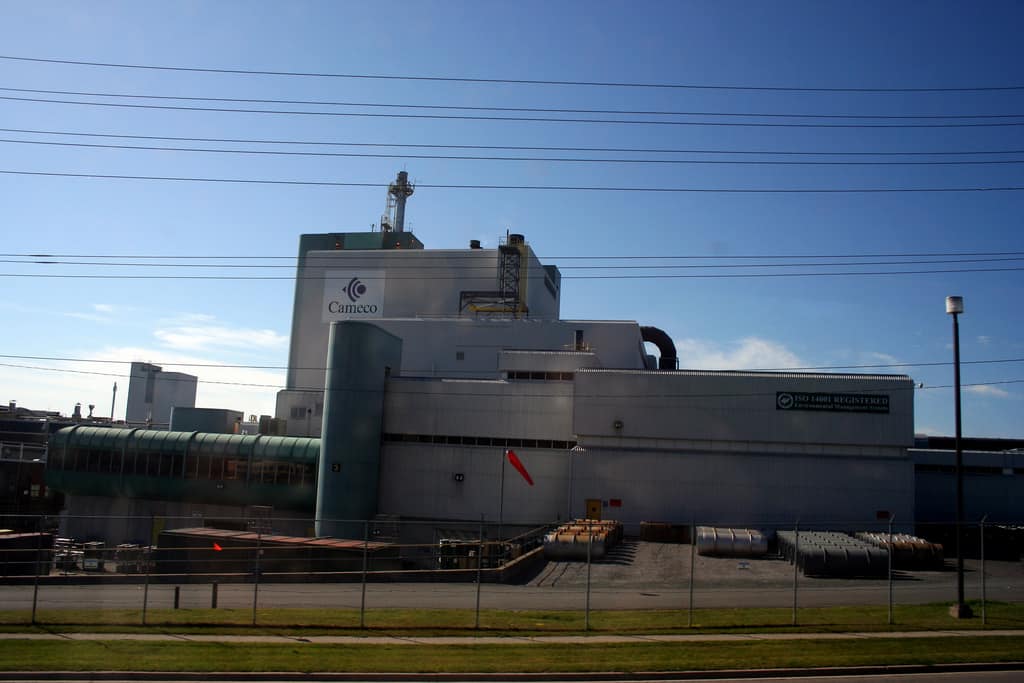Cameco Corp. (TSX:CCO)(NYSE:CCJ) has garnered a significant amount of interest over the past few years — often touted as having a huge amount of potential.
As the world’s largest producer of uranium, that potential is still there. But after facing multi-year lows in uranium prices, is Cameco still the long-promised great investment it once was?
Here’s a look at why the stock is down, and why it might not stay at current levels much longer.
Fukushima washed away all demand for uranium
Nuclear power is often seen as a clean, safe, and reliable form of energy. It’s used in 449 reactors in countries around the world. Uranium, the fuel used for these plants, currently costs around US$20 per pound and has been steadily decreasing since a 2011 earthquake and tsunami damaged a reactor in Japan. Prior to the incident in Japan, uranium traded as high as US$72 per pound.
In the aftermath of the Fukushima disaster, Japan shuttered all of its nuclear reactors, and demand for uranium around the world dried up. While that incident took place over five years ago, Japan has been slow to restart its suite of nuclear reactors; only five of reactors have been restarted since the meltdown. The most recent reactor to be restarted, the No. 3 reactor at Takahama, was just restarted last month.
Japan still has dozens of other reactors still offline, which highlights a bigger problem for the uranium market. Power generation is one area that we take for granted in our daily lives, so when something goes awry it attracts a significant amount of attention and puts agencies and governments on edge.
By way of example, the power outage on the east coast of the U.S. that hit parts of Ontario and Quebec over a decade ago spawned a slew of talk on both sides of the border to modernize and upgrade the grid to prevent such an event from recurring, but as time went on and things returned to normal, those calls were slowly silenced.
Japan slowly but steadily restarting reactors is a sign that things are returning to normal. Apart from Japan, 15 countries have a total of 60 new reactors under construction; a third of these new reactors are located in China.
One additional point worth noting is that a growing number of countries that already have nuclear power plants are beginning to upgrade or replace those facilities with larger, more modern ones.
Is the market really flooded with cheap uranium?
Another often-cited concern regarding Cameco is that mining operations didn’t adjust accordingly with the drop in demand, resulting in a significant glut of inventory.
While this part was true, what critics often forget to take into account is that existing uranium contracts have rates that are negotiated well in advance, meaning that despite the drop in demand, Cameco still had a stream of customers purchasing uranium under pre-arranged contractual terms and prices, which is steadily eating away at that glut.
Additionally, long-term uranium prices are starting to show some improvement. Coupled with renewed interest in nuclear power, Cameco should begin to finally realize some growth and completely eliminate any excess supply.
In fact, some industry pundits are now looking at the possibility of there being a shortage of uranium emerging over the next year, which could send uranium prices and, by extension, Cameco’s stock price surging.
Should Cameco be in your portfolio?
Irrespective of whether or not uranium prices surge over the next year, Cameco’s business is a sound investment. Countries will continue to use nuclear power as part of their infrastructure plans, and Cameco is a preferred supplier of that fuel.
The fact that Cameco is now trading near lows not seen in some time makes the company a very appealing target for investors that are looking for long-term gains.







